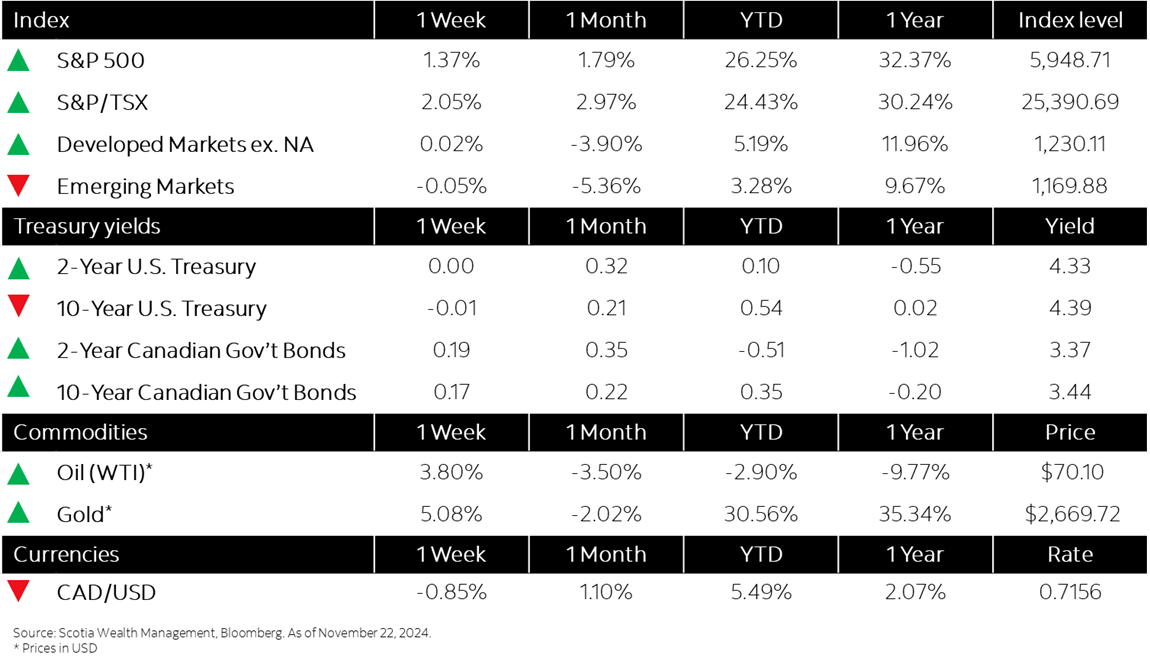
Market Watch: Nov. 22, 2024
This week’s highlights
- Equity markets rebound despite geopolitical tensions, post election re-pricing
- Shifting interest rate forecasts push bond yields higher
- Canada’s inflation rate jumps back up to 2% in October
- U.S. home sales rose in October following decline in mortgage rates
- Eurozone trade surplus rises on jump in exports to U.S.



